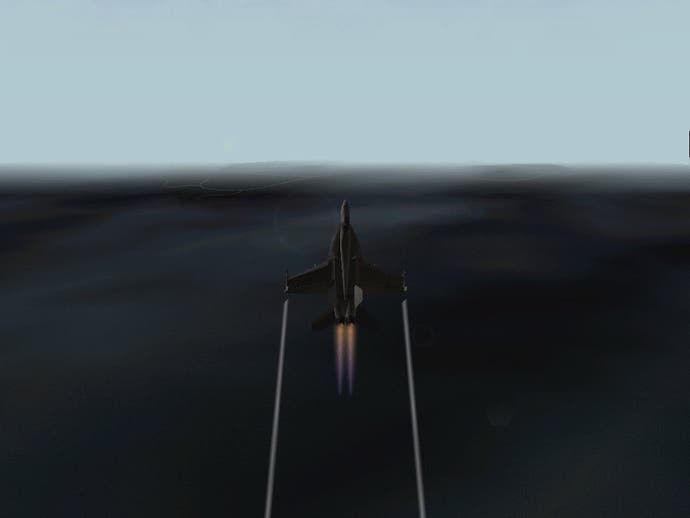F/A-18E SuperHornet
Flight sim reviewed
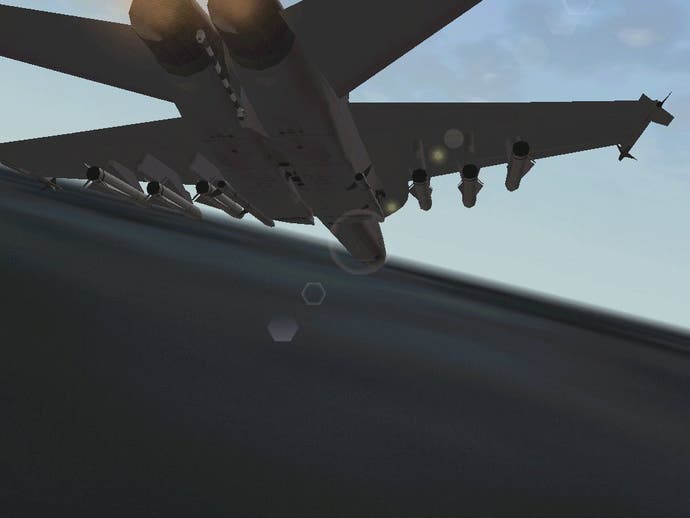
In The Navy
In the midst of the release of Unreal Tournament and Quake 3 Arena there are other games that, while they may not share the cult like status, are no less impressive in their own arena. One such game is F/A-18E SuperHornet...
SuperHornet is a flight combat sim based on one of the US Navy's latest fighter jets, a sim that is apparently so realistic that it is "Used by the Navy" according to the box. Which is high praise for the game's developer, Digital Integration.
The plot presented by the opening video (which wouldn't look out of place in a low budget movie) is a classic case of East vs West, with long time enemies America and Russia battling it out as usual.
All the features and missions can be accessed via the menu system, accompanied by some appropriately rousing music. Some of the buttons that control the menu screens are inconveniently placed though, and can lead to momentary confusion. And while the music is initially grabbing it rapidly becomes annoying...
Once you get past these minor interface niggles, the game does offer all the expected features though.
There is the usual quickstart feature which allows for some small tweaking before the game places you in the thick of the action. The combat button takes you into the regular game, while the Pilot Log switch allows you to chart the progress of your sorties.
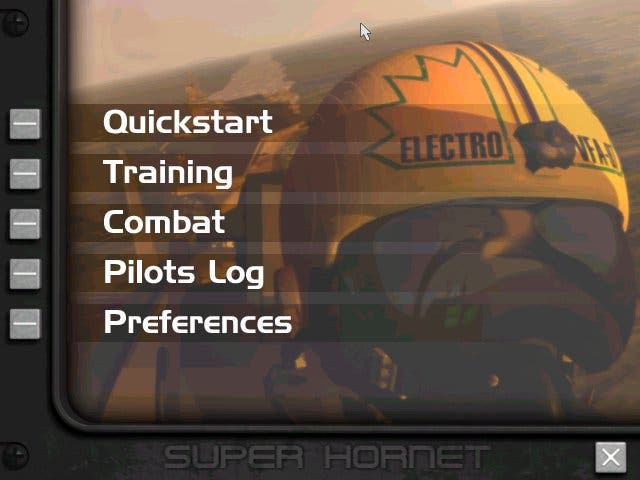
Training
To get you started there are also a few training missions, which cover the variety of missions that exist in the game such as air-to-ground attacks and reconnaissance missions.
There are right ways to handle training missions, and wrong ways. Flanker 2.0 got it right with fully instructed tutorials, while SuperHornet really has the wrong idea. There is no real "teaching", and you simply end up looking at a map that describes a simple flight plan that is aimed to help you learn how to achieve the training objective.
Once you are out on the runway there is no guidance, and you are expected to be able to fly the plane instantly. With the number of controls required just to get the engines going, I feel that this is a little harsh on less experienced players.
Once you are in the air you are expected to be able to fly the flight plan and then land back at the runway. Now granted this isn't too tricky, but sometimes it is nice to get some help.
There is a rather hefty manual that accompanies SuperHornet (a pre-requisite for any flight combat game), and it could be argued that one should really read the manual before just jumping in and playing. Sadly though, the manual is no less harsh on the newbie.
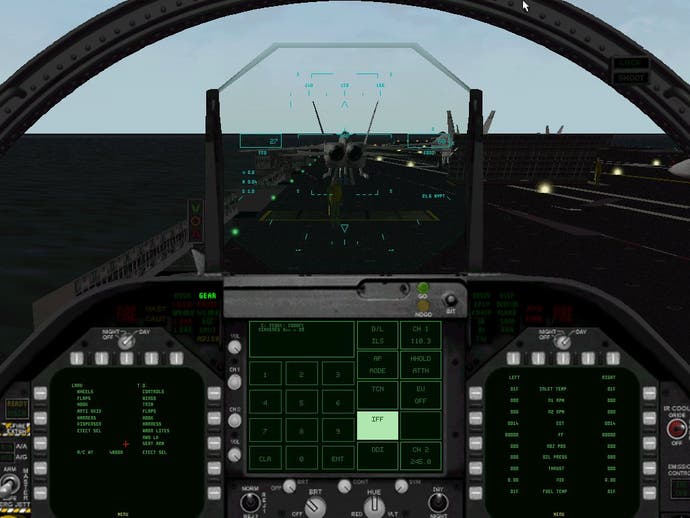
Actual Combat
Once you are familiar with the plane and its controles you can fly some proper combat missions. Select which theatre of operations you wish to fly in, select which mission type you want to undertake, and from there you can select an individual mission.
At first I found it very strange to be able to pick and choose from any of the missions in the game right from the start, but it is a good idea. Instead of the player having to progress in a linear fashion through missions which they may not want to play at the time, they are free to pick whichever mission they like.
The other strange twist is that you can change between the two battle zones, as the game keeps a log of all the action your pilot is involved in. While this is somewhat of a departure from the regular style of play found in such games, it is an interesting change that, in this case, works quite well.
Right from the start of the game it is clear to see that Digital Integration have worked hard to put the player into a quasi-real universe, in which the player is just one small part of the entire world.
The actual missions are well designed, but unfortunately thanks to the power of modern technology there is actually very little that you have to do. Obviously you have to fly the plane, but when it comes to a spot of aerial combat there is very little old fashioned dogfighting involved.
Hostile planes are locked onto at impressive distances, and as soon as you are near enough the shoot light flashes up. I'm almost surprised that it doesn't fire for you...
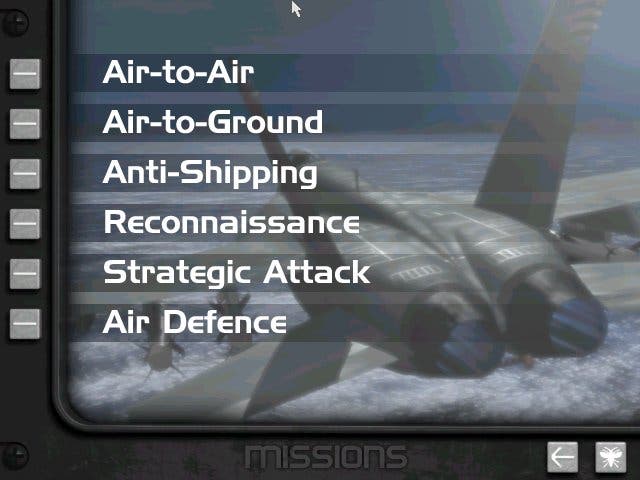
Environmentally speaking
SuperHornet is certainly well endowed when it comes to graphics technology. The landscape flows beautifully along, clouds bathe the tops of tall hills quite majestically, and the models are detailed and superbly textured. In fact SuperHornet has the most realistic carrier that I have seen.
On the sound side, there is support for 3D sound acceleration, which is always good as it adds just that little bit extra to the game. The sounds themselves are very clean and well done. It is especially nice to have pilot chatter, especially when most of the time it is very relevant to the situation.
I do however have one gripe though. Whenever the player starts to do something unexpected (I refrain from saying wrong), the pilot screams at the top of his lungs. While this may sound like a good warning system, even though the plane already has one of its own, should you want to indulge in a bit of free flying you will be serenaded by the screams of your virtual self...
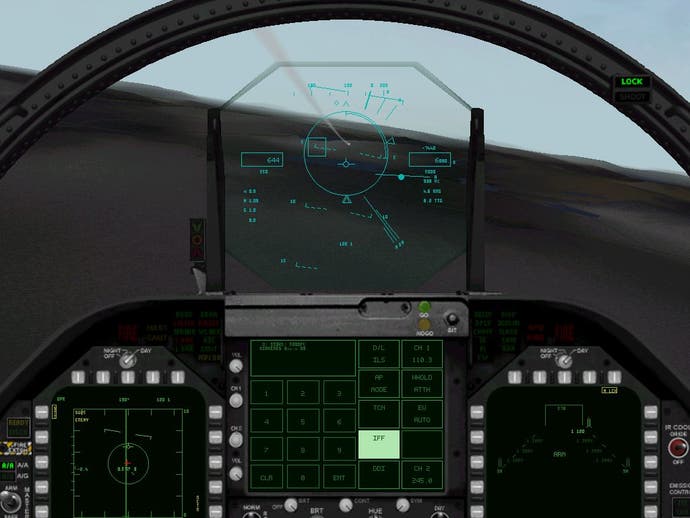
Conclusion
As with all flight combat simulators, you are only really going to like SuperHornet if this kind of thing is your bag. There are some flight sims that manage to impress even the uninitiated, but unfortunately F/A18E SuperHornet is not one of these, thanks to a less than brilliant interface and poorly constructed training option.
Despite this the game is likely to appeal to some of the more avid armchair pilots, and I'm sure it will find its niche thanks to its ultra realistic controls. On a general level it is hard to recommend, but for any hardcore flyers out there (and you know who you are), this is worth a look. Release Date - available now
-
